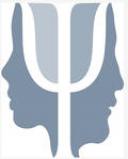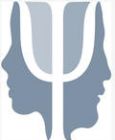Education
Teachers: Believe It or Not
How do teachers' beliefs affect their instruction?
Posted May 4, 2012
By Dr. Michele Gill
With education reform finding itself ever-more in the spotlight, there has been some great debate about why some teachers are more effective at generating student achievement than others. And, while a large volume of data has been compiled surrounding questions of class size, socio-economic status, and even teacher tenure, some researchers are now looking to the varying beliefs instructors hold in education and how they impact classroom performance.
In 2011, a leading research team of Helenrose Fives and Michele Buehl proposed that personal beliefs might serve three functions for teachers, simultaneously acting as filters, frames, and guides—a theory I’ve seen consistently supported through my own research.
When a teacher first enters the profession, for instance, various beliefs (often inherited from their own education) filter his or her understanding of “proper” instruction methods. In my 2012 study, a prospective teacher was given a document outlining a new way of teaching math that allowed students time to figure attempt problems on their own prior to receiving any demonstration. After reading this approach, a teacher in my study wrote, “The only disadvantage I see in this scenario is that Ms. W does not show how the problem can be solved before asking the class to figure it out.” Here, a teacher's belief that problems must be demonstrated prior to students’ attempts was so strong that it interfered with his ability to appreciate the intended (and inverse) goal of the article: that students sometimes benefit from periods of self-regulation.
We also know that teacher beliefs may serve as frames for solving instructional problems. This notion is best illustrated by a team of teachers who chose to avoid teaching their lower math students certain strategies because they assume that they’d be too much for them to comprehend. (Interestingly, the most effective math educators know that it's precisely the lowest-performing students who need explicit training with math strategies.)
Finally, my research has shown great evidence that teacher beliefs serve as guides to action. A particularly strong belief in this area is a teacher's self-confidence in her abilities. A teacher who truly believes that she can teach any student is less likely to give up on a difficult pupil than a teacher who doubts her abilities.
In all three examples noted above, the beliefs held by teachers generated marked differences in their approaches to different situations (and, unfortunately, for the worse). As we continue to learn more about teacher beliefs, we’ll be able to proactively refine them to meet the challenges of today’s educational settings. Utilizing professional development opportunities to address guiding beliefs and raise self-awareness, for instance, may help guide teachers away from harmful or achievement-inhibiting behavior.
References
Fives, H., & Buehl, M. M. (2011). Spring cleaning for the "messy" construct of teachers' beliefs: What are they? Which have been examined? What can they tell us? In K. R. Harris, S. Graham, T. Urdan, S. Graham, J. M. Royer & M. Zeidner (Eds.), APA educational psychology handbook, Vol 2: Individual differences and cultural and contextual factors. (pp. 471-499). Washington, DC US: American Psychological Association.
Gill, M. G. (2012, April). Exploring the function of teacher beliefs in mathematics instruction. Paper presented at the the meeting of the American Educational Research Association, Vancouver, BC.
Gill, M. G., & Boote, D. N. (2012). Classroom culture, mathematics culture, and the failures of reform: The need for a social view of culture [Electronic Version]. Teachers College Record. Retrieved February 29, 2012, from http://www.tcrecord.org/content.asp?contentid=16718
Gill, M. G., & Hoffman, B. (2009). Shared planning time: A novel context for studying teachers' beliefs. Teachers College Record, 111, 1242–1273.


